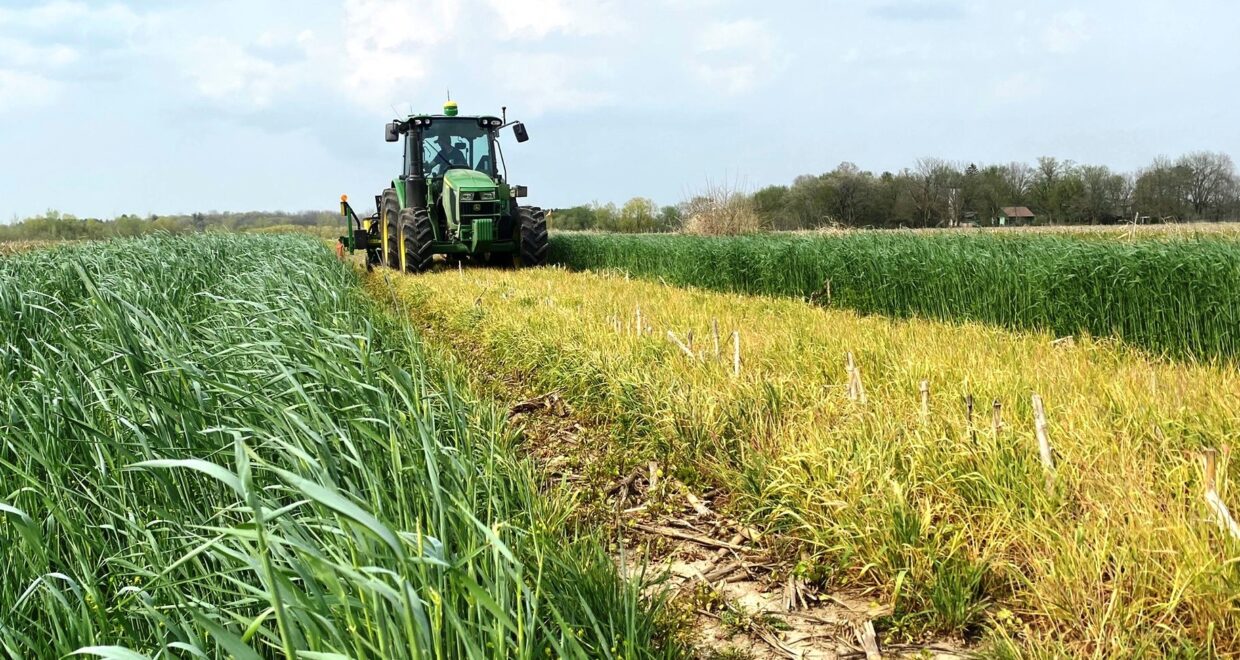Planting Soybean Green Proves Effective for Waterhemp and Palmer Amaranth Suppression
Recently published research in the journal Weed Science shows planting soybean into a green, living cover crop effectively suppresses two problematic Amaranthus weed species – waterhemp and Palmer amaranth – when integrated with pre-emergence (PRE) herbicides.
“Our findings support the premise that planting soybean is an effective recommendation to optimize cereal rye biomass production for effective waterhemp and Palmer amaranth suppression,” says Rodrigo Werle, Ph.D., Associate Professor & Extension Cropping Systems Weed Scientist, University of Wisconsin-Madison, WSSA member scientist, and a contributing author to the journal research article. “Integrating an effective pre-emergence herbicide program at soybean planting was also an important component of effective Amaranthus species control.”
The newly reported research findings come from 10 U.S. states (Arkansas, Illinois, Indiana, Iowa, Kansas, Kentucky, Missouri, North Dakota, Pennsylvania, and Wisconsin) during the 2021 and 2022 growing seasons. “Planting soybean green provided a 44% reduction in Amaranthus species density compared to no-till,” notes Werle. “The use of PRE herbicides resulted in a 68% reduction in Amaranthus species density compared to no PRE. So overall, we found that planting soybean green is a feasible management practice to optimize cereal rye biomass production, which, combined with preemergence herbicides, provided effective Amaranthus species management.”
However, soybean response to planting green can vary, cautions Werle. “Soybean stand was a key factor in maintaining soybean yields compared to no-till when planting green.”
More information about planting soybean green and Amaranthus species weed control can be found in the article, “Planting soybean green: how cereal rye biomass and preemergence herbicides impact Amaranthus spp. management and soybean yield” in Volume 72, Issue 5 of Weed Science, a Weed Science Society of America journal, published online by Cambridge University Press. This multi-state collaborative study, sponsored by the United Soybean Board, was led by Jose Junior Nunes, Ph.D., a former doctoral student in Dr. Werle’s Cropping Systems Weed Science Research & Extension lab at the University of Wisconsin-Madison.
About Weed Science
Weed Science is a journal of the Weed Science Society of America, a nonprofit scientific society focused on weeds and their impact on the environment. The publication presents peer-reviewed original research related to all aspects of weed science, including the biology, ecology, physiology, management and control of weeds. To learn more, visit www.wssa.net.
Media Contact:
William Vencill, Ph.D.
Editor – Weed Science
wvencill@uga.edu, 706-247-9890






